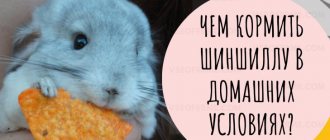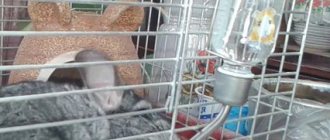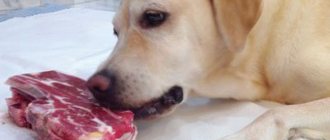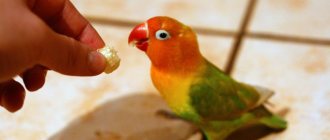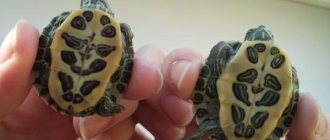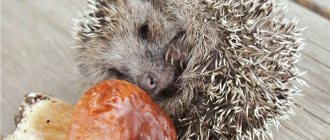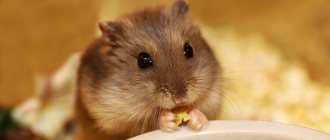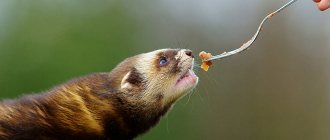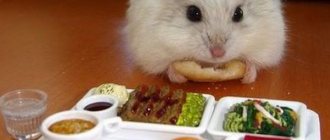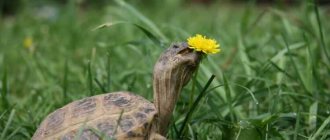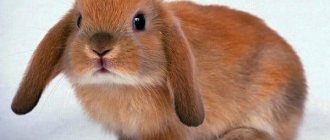A balanced diet is the basis for the proper development of any dog. It is important for owners to know what will be preferable: industrial dry food or natural food prepared from fresh ingredients. Let's consider what to feed the Pekingese. After all, this breed has its own developmental and physique characteristics that must be taken into account.
Pekingese nutritional features
The Pekingese's diet, like any breed, will depend on age, health and time of year. Each owner decides on the type of food independently, not forgetting to adjust it depending on the characteristics of his “lion cub”.
We note that the Pekingese's fangs are somewhat underdeveloped, which dictates the need to additionally grind the food: natural products should be cut into small pieces, and dry food should be soaked.
Both ready-made food and natural food are suitable for the breed. The main thing is that the natural products are fresh, and the prepared food belongs to the super-premium or holistic class.
Prohibited Products
There are foods that are strictly forbidden to give to Pekingese:
- tubular hollow bones;
- sugar, chocolate, sweet pastries
- salt, spices;
- smoked and fried foods;
- pork;
- potato;
- flour products;
- citrus fruits, grapes, raisins, avocados;
- hot or stale food.
It is also not advisable to give representatives of this breed fresh bread, pasta, bananas, onions and garlic. It is not necessary to exclude these foods completely. There must be moderation in everything.
Feeding dry food
Ready-made food has a number of advantages:
- ease of use and storage;
- balanced diet;
- there is a very wide range on the market, allowing you to choose the type for the most picky dog of any age;
- various types of medicinal feeds.
To feed the Pekingese, they choose super-premium and holistic class food.
Feed comparison
Monge dog grain free mini
The complete composition does not contain grains (they are replaced by potatoes), but is rich in protein (poultry meat). The combination of Omega-3 and Omega-6 is optimal for Pekingese wool. To maintain the health of your dog's joints, it contains chondroitin and glucosamine.
Pro Plan Small & Mini Adult Optidigest
The Pro Plan line includes a wide variety of options. This type (with lamb and rice) is suitable for dogs with sensitive digestion. The product contains corn, which is a common allergen.
Royal farm adult mini chicken
Super-premium complete food that does not contain soy and millet. A special recipe, which contains L-carnitine and a complex of probiotics, allows you to control body weight and prevent the development of obesity.
Bosch mini adult with lamb and rice
The recipe allows small dog breeds to get maximum energy value from a small portion of food. The size and structure of the granules are perfect for Pekingese fangs. Composed of almost 25% protein (poultry) and 18% rice, lamb meal is 5%.
We also performed a detailed analysis of the following feeds: Proplan, Monje, Dog Chow, Brit.
When to change food
The need to change food may arise in the following cases:
- signs of an allergic reaction appeared (scabies, rash, crusts in the ears, diarrhea);
- external signs have appeared indicating a lack of nutrition (hair loss or dullness, layered and breaking claws, plaque on the teeth);
- the Pekingese shows signs of excess weight;
- the age of the dog and its condition (pregnancy, illness) change.
The introduction of a new type of food should occur gradually. You should strictly monitor the dog’s body’s reaction to a new type of food.
Common diseases and vaccinations
Vaccination is an important stage in a pet’s life. This simple procedure, performed on time, will save your dog from many illnesses. Only healthy animals can be vaccinated. You need to start doing this from an early age. Pekingese puppies receive their first vaccinations at 8–9 weeks.
Pekingese can experience various diseases, including demodicosis, malassezia, and tartar formation. One of the most vulnerable places is the eyes. The Pekingese's eyes need to be constantly monitored and cared for. These dogs often injure the eyeball; they may even develop an eyesore. The owner's first aid kit should contain chloramphenicol drops.
If a Pekingese's eyes fester, it means that something got there or you missed an injury, and the inflammatory process began. Carefully remove the pus from the corners and immediately contact a specialist. Do not try to solve the problem yourself; treatment methods should be determined by a veterinarian.
Subtle clouding of the cornea or leukoma may indicate corneal erosion, a specific disease that affects this breed. An eyesore also appears as a result of conjunctivitis and even allergies when the process has been started. An eyesore is not so easy to cure, so it’s better not to let it get to that point.
Demodicosis is also a common disease. Its causative agent is a microscopic mite. The dog is constantly itching - this is the first sign that the pet has demodicosis. An animal can scratch itself for several hours in a row, then redness appears, and after a few days an ulcer appears at the site of each scratch. If the Pekingese is not treated, it may die, so a dog that is constantly itching should be immediately alerted; there is no need to let the situation develop into festering wounds. The disease does not go away on its own; demodicosis can last for years, which will ultimately lead to blood poisoning.
Malassezia is another skin disease. Its causative agent is Malassezia yeast fungus. It always lives on the animal’s fur and develops only with reduced immunity. The main symptom is itchy skin, which causes the dog to constantly itch. The Pekingese tries to get rid of the unpleasant sensation, but in fact, when it itches, it spreads the mange throughout its body. As soon as you notice alarming symptoms, contact the veterinary clinic immediately.
Now a little about other diseases. Don't let your pet jump off the couch too often to avoid injury and hind leg failure. Have you noticed that the animal rides on its butt? So, it's time to give anthelmintic. However, this is not the only reason why a dog rolls on the floor. It is possible that the anal glands are clogged with mucus, which causes severe itching. The dog rides on its butt to get rid of the unpleasant sensation. How to treat? It is better to seek help from a specialist. Note that after the dog has been cured, you need to monitor it, because often the gland “clogs” again.
Similar article: Rules for the care and maintenance of the Shih Tzu breed at home
Also make sure that your pet does not develop tartar. Check your Pekingese's teeth, brush them several times a week, and feed them high-quality food. Tartar can cause teeth to fall out.
Natural diet
Pekingese are big gourmands who are ready to give up regular food after trying an atypical treat. The basic rule: strict regime and avoidance of all sorts of harmful goodies in the diet.
Dogs of this breed are prone to obesity, and given their low weight, even an extra 200 grams is fraught with serious problems with the heart, kidneys and joints.
Bones are excluded from the diet; Pekingese teeth simply cannot cope with them, but cartilage is welcome. Meat can be boiled or given raw (after freezing), offal and fish can be boiled. Remember that the fish must be boneless.
Vegetables are stewed or served raw, as are fruits.
When compiling a natural diet, use the rule: more than half of the daily portion should be protein foods, the rest should be vegetables, fruits, and cereals.
When feeding natural food, you will need specialized vitamin and mineral complexes so that your pet receives the full range of nutrients.
The basis of the Pekingese menu should be:
- lean meat;
- offal (they should not be a substitute for meat);
- low fat fermented milk products;
- fruits and vegetables (any seasonal fruit, zucchini, pumpkin, carrots);
- fish (use only sea fish);
- cereals (rice and buckwheat).
Here is a very interesting opinion from the owner of a Pekingese about proper nutrition.
Sample menu for the week
| Day of the week | Menu (1, 2 feedings) |
| Monday |
|
| Tuesday |
|
| Wednesday |
|
| Thursday |
|
| Friday |
|
| Saturday |
|
| Sunday |
|
Pet's refusal to eat
The reasons why a dog refuses to eat can be different:
- stress;
- bad teeth;
- digestive problems;
- internal injuries.
Note! It is advisable to contact a veterinarian as soon as possible - establishing the cause of lack of appetite at home can be very difficult, and sometimes impossible.
By remembering the simple rules given above, every breeder will be able to provide his beloved Pekingese with proper, tasty nutrition, thanks to which he will live a long and happy life.
What not to feed
Pekingese are always happy to receive a portion of food from the owner's table. This is strictly prohibited! In addition, the following foods should be excluded from the diet:
- legumes and potatoes;
- fatty meat (pork, lamb);
- sweets;
- and sausages.
Choose one type of food, do not combine or feed the Pekingese with natural products if he is already eating ready-made food. This will lead to gastrointestinal upset and obesity in the dog.
Watch the continuation of the video above, about what you should not give to a Pekingese.
Training Basics
From childhood, a puppy must be accustomed to the company of people and animals. In this case, it is better to choose a place where small breed dogs walk. Otherwise, the Pekingese may get into a fight with a large dog and get injured. Accustom your pet to the collar so that he associates it with a walk. Teach him the commands “Ugh!”, “Nearby!”, “Place!”.
To teach tricks, you need to observe your dog and identify movements that give him pleasure. For example, jumping, turning, walking on hind legs. When consolidating results, do not shout or gesture. Show joy from her successes, demonstrate patience and perseverance.
What to feed a Pekingese puppy
| Puppy age (months) | Number of feedings per day | Menu |
| Up to a month | From the first week of life - every 2 hours. |
|
| 1-2 | 6 |
|
| 2-3 | 5 |
|
| 3-6 | 3 |
|
| 6-8 | 2-3 |
|
| From 8 | 2 |
|
Watch a short video of how a two-month-old girl eats!
Care
So, what do you need to know about the care and maintenance of the Pekingese? Let's figure it out. Let's start with the ears.
Behind the ears
The dog's ears have long hair. You should constantly inspect your pet's ears while brushing. Sulfur removal is done with a cotton swab, which must first be moistened in a disinfectant solution (can be purchased at a pet store). If the ears are constantly itching and the dog is constantly shaking his head, then this is a signal to visit the veterinarian.
Behind the wool
Pekingese have long hair with a thick undercoat. This is one of the main decorations of this breed. Therefore, caring for a Pekingese, first of all, involves taking care of the coat, i.e. grooming. At home, the dog needs to be brushed not just often, but daily. The ears, chest, sides, and area under the tail require especially careful combing.
To brush your Pekingese, you will need a long-handled metal comb and a wire brush. When it's hot, your dog could use a haircut. Specialists will groom your Pekingese “like a lion,” and he will be simply magnificent. You can bathe your dog no more than twice a month, but you shouldn’t wash your pet’s face - just wipe it with a damp cloth every day.
Related article: How to give a fashionable haircut to a Yorkshire Terrier at home
Behind the teeth
If you feed your dog a balanced professional food, then most likely your pet’s teeth will be healthy. While chewing the granules, the natural plaque is removed. You can often notice yellow discoloration and stains on the teeth. Contact your veterinarian for professional dental calculus removal. To prevent tartar from forming, try brushing your pet’s teeth with a toothbrush, but not all Pekingese agree to put up with this procedure.
Behind the claws
Representatives of this breed are not fans of running, which is why Pekingese claws require special care. Nail trimming should be introduced when Pekingese dogs are still puppies. This should not be done often, only when necessary. When trimming claws, only the very tip is cut off; the hair between the toes also needs to be trimmed. If the claws are not given proper attention, this can lead to damage to the claw. Of course, the procedure for trimming nails does not require haste. Purchasing a nail clipper from a specialized store will greatly ease the situation.
Feeding
Feeding is one of the most pressing issues for Pekingese owners. Dogs tend to be picky about food. A feature of the breed is the underdevelopment of fangs, so the meat should be finely chopped or twisted in a meat grinder. Meat and offal are lightly boiled. Cheese is rarely given, except as a reward.
Feeding with vegetables is carried out once a week. Use only those that do not cause bloating. Fermented milk products are given separately or with fruit. Pickles, smoked meats, pasta, potatoes, anything fried, chicken and fish bones are strictly prohibited. To prevent the formation of tartar, you can give beef bones. Proper nutrition will help the owner avoid such an unpleasant problem as diarrhea in the Pekingese.
Clothing and walking
When the weather is cool outside, despite its long coat, the Pekingese will need clothing. In your winter clothes wardrobe it would be nice to have a warm jumpsuit with padding polyester. Choose a soft fabric, and the overalls themselves should not hinder movement. The dog should feel comfortable in it. In wet weather, clothing for the Pekingese is a jumpsuit with a hood. It is needed to hide long ears. In the summer, a mesh jumpsuit would be a good idea. Of course, the dog is not cold, but protecting its beautiful coat from dust and mites will be very useful.
It’s good if your pet doesn’t have fleas, but as a useful accessory to a summer outfit, a flea collar will be useful. Fashion designers for dogs offer a very useful thing - soft boots. They will protect your paws from dirt and salt on the roads. You can attach a bow to your pet's leash as a decoration. Pekingese are not couch dogs; you need to take them for walks regularly.
What to feed an adult Pekingese
When feeding an adult dog, you should consider:
- Serving size should be adjusted depending on activity and weight;
- if the dog leaves food, you should reduce the portion, if it rattles the bowl, increase it;
- in summer, reduce the amount of protein and portion, increasing the amount of fiber; in winter, vice versa;
- Pekingese are gourmets, so their diet should be varied;
- The serving size of the dry product is indicated on the packaging and is a recommendation.
Recommendations from nutritionists
Proper nutrition has many nuances; expert advice will help you improve it.
- After six months, the puppies begin to shed their first coat and their coat changes to that of an adult. During this period, the menu is enriched with seaweed or seafood. They are contraindicated for younger dogs.
- The ratio of meat and vegetables varies depending on the time of year. In summer, the body needs more fiber, in winter - protein.
- The mobility of Pekingese depends on temperament. Active dogs need 600 Kcal per day, with a moderate lifestyle 400 Kcal is enough, with a sedentary life - 300 Kcal.
- The amount of buckwheat on the menu is limited; its excessive consumption can cause urolithiasis.
- Pekingese dogs need to be fed intensively after giving birth or during pregnancy. The volume of food increases by 15% weekly from the 30th day of pregnancy. Returns to normal after the mother stops feeding the puppies.
- Treats should be supplied in moderation, otherwise gourmets will refuse regular food.
We found out what is best to feed the Pekingese. Monitor your pet's diet from an early age and instill in him the rules of feeding. Then the pet will be healthy, and it will be easier for you to take care of it.
Feeding after childbirth
The bitch’s diet after giving birth should not differ from that in the second half of pregnancy:
- 3 times a day;
- the portion increases due to proteins;
- to restore the bitch after giving birth, use a line of food intended for puppies;
- Naturally, they use a complex of special vitamins for lactating bitches.
Photo: flickr.com
Pregnancy and birth
Pregnancy in these small dogs lasts from 55 to 67 days, and 2-3 puppies are born for the first time; with subsequent births, 4-7 babies are possible.
If the process of giving birth to puppies is going normally, then your help to the dog will include carefully releasing the newborn baby from the film, checking his breathing, treating the baby’s umbilical cord with iodine or brilliant green, and vigorously rubbing him so that he can start to speak.
Advice! You should carefully monitor the process of childbirth in a dog, read additional literature on this topic and consult with a veterinarian. If the dog cannot give birth on its own, call a doctor.
You need to rub the puppy with soft, dry flannel or cotton cloths, but remember that this must be done softly and gently. After this, he is placed next to the mother, where he usually immediately finds her nipple. If the baby cannot do this, help him.
Watch carefully when he falls asleep (in a few minutes), then put the puppy in a basket with soft diapers not far from the mother so that she can see the baby. After this, the dog will begin to produce other puppies, with which you need to do the same.
Of course, if this is not the first time a Pekingese mother gives birth, she will cope with everything herself, but if you see that the dog does not immediately understand what to do when the puppy is born, provide all possible help.
Varieties
A lot of time has passed since the appearance of the breed, which may be why this species has undergone some changes. It is now generally accepted that Pekingese are divided into species. But this is far from true. In order to understand what we are talking about, you need to know a number of nuances.
Mini Pekingese
This is not a separate species, but only a simple variety. The fact is that dwarf dogs can appear in the litter of quite large individuals. It is believed that this is a culling. Such representatives are not allowed to attend exhibitions.
Some say that short stature can be determined only when the puppy is 8 months old. Other breeders claim that babies are born very small and in the process of growth significantly lag behind their brothers, although they have an excellent appetite and are very active.
By and large, this deviation is not something out of the ordinary. Having bought such a pet, you will appreciate its qualities:
- the little ones are very smart - they perfectly understand human gestures and are very friendly;
- The small stature of a domestic dog is more of a plus than a minus.
Purebred Pekingese
Some breeders proudly call their pets “royal” or “imperial”. They do this in order to sell puppies at a higher price. Real Pekingese were bred to communicate with emperors anyway. Therefore, purebred representatives look graceful.
And if we already touch on standards, then it should be noted that there are no varieties among Pekingese. It's just such a breed.
Japanese Chin
Some people confuse Pekingese and Japanese Chins. These breeds are very similar. They are similar in appearance to a lion. Previously they belonged to emperors, but not Chinese, but Japanese. Ordinary people were not even allowed to look towards the Chins. They were also revered and associated with religious customs.
The profile of this dog is snub-nosed, and the colors come in a variety of colors, but most often they are red, fawn, and shades close to these colors. This dog’s nose is black and is at the same level with the eyes, and the eyes seem to be outlined with a black pencil. The coat is long and silky. Weight is small - about 3 kg. The large head corresponds to the size of the body. The tail is thrown gracefully over the back. The fur falls beautifully down the back to the floor.
Crossbreeds
Now we need to talk about half-breeds. They appeared as a result of mating of different types of dogs with similar appearance. These representatives come in different colors. From red to black and white. And there are even short-haired and smooth-haired half-breeds. But we must remember that there can be no talk of any standards here. You need to forget about various exhibitions where the most purebred representatives are present, just like about pedigree breeding if you decide to get a hybrid dog.
The most popular crossbreed is the Pickapom (Pekingese-Spitz hybrid). Dogs are intelligent and playful. But they cannot stand loneliness. There is a cross between a Pekingese and a pug. A cute dog who has absorbed all the best from both breeds. When dog breeders tried to combine the Shih Tzu and Pekingese breeds, they hoped to influence the lengthening of the coat. The puppies have absorbed the best qualities. They practically do not shed and have an easy-going nature.
